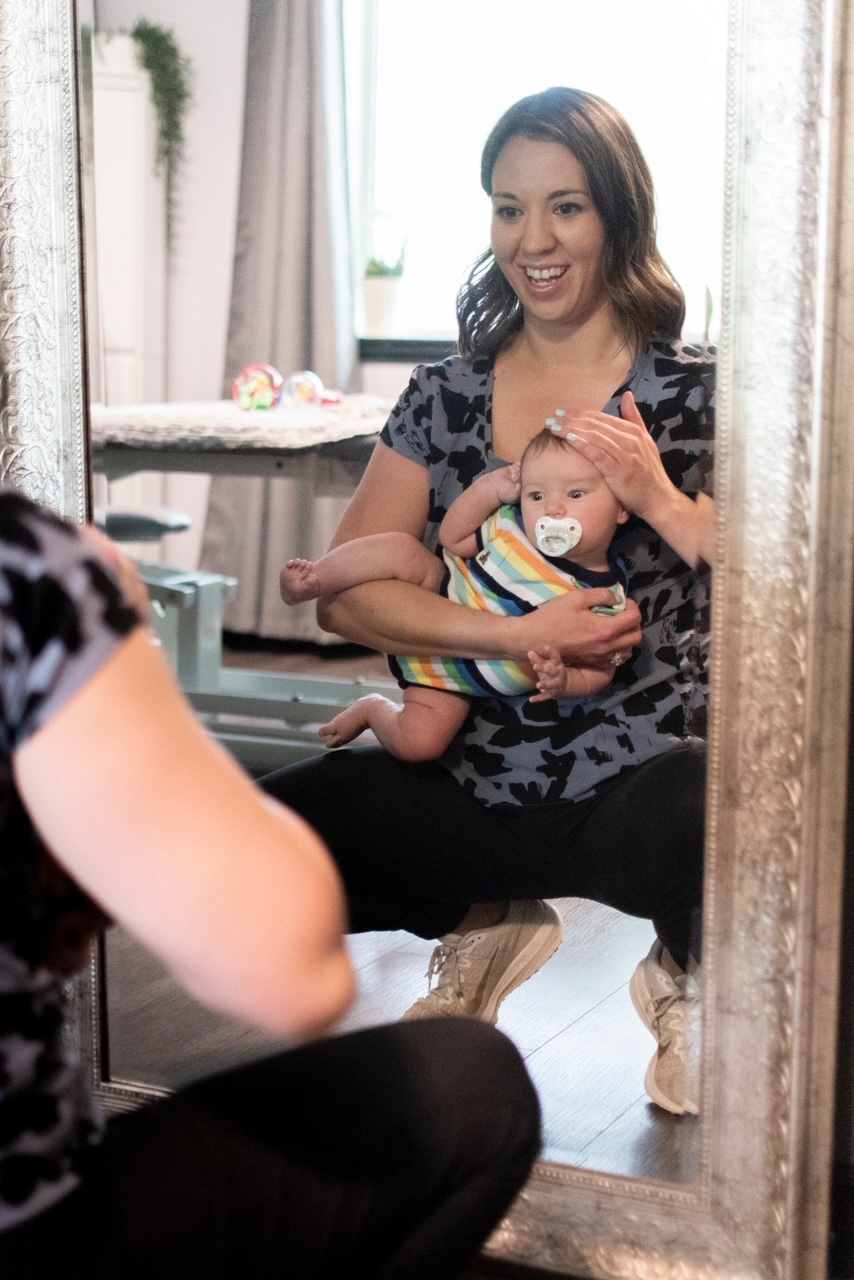Tracy Banister, Pediatric Physiotherapist, answers a common parent question.
My baby has a flat head… now what?
What parents need to know about Torticollis and Plagiocephaly
Torta what? Torticollis is a condition characterized by a tightening of the neck muscles that are involved in tilting and rotating a baby’s neck. It has been reported that as many as one in six babies have torticollis making it a fairly common condition.
If torticollis develops, a turning and/or head tilt preference is often noticed during the first 6-8 weeks after birth. Typically, by 6 weeks, baby starts to gain more head control and will choose to only turn his/her head in a certain direction. A flat spot on the head (plagiocephaly) might be starting to develop.
Possible Signs of a Torticollis:
- Baby has a preference to turn head towards one side and/or tilt the head to one side.
- Rotation or tilt is often seen while laying on their back, in a container (car seat, swing, baby bouncer etc.) or being held.
- Baby may have difficulties breast feeding on one side (the breast that requires them to turn towards their non preferred side).
- Sometimes the tight muscle can be felt on one side.
- Baby may only roll towards one side.

Photo from Cleveland Clinic https://my.clevelandclinic.org/health/diseases/22430-torticollis
What causes Torticollis?
Congenital torticollis is the most common and develops during pregnancy often due to crowding in the uterus. Multiple babies or a breech presentation may crowd the baby.
An acquired torticollis develops during or after the birth. A torticollis can develop during birth trauma including a cesarian section, the use of forceps or vacuum suction during delivery. Repeatedly positioning baby the same way each time in a car seat, carrier, swing, bottle feeding position, and/or carrying position can also cause a torticollis.
Torticollis can cause a delay in motor milestones, asymmetry in strength in the body and a plagiocephaly.
Having torticollis increases the likelihood of developing a plagiocephaly due to increased time spent on the same side of the head. A plagiocephaly is a flat spot that develops on the back of the head on either the right or left side. The flat spot is on the same side as the turning preference.
A brachycephaly is a flat spot that is across the back of the head on both sides. Typically a brachycephaly occurs when a baby spends most of its time directly on the back of their head.

Photo from aboutkidshealth.ca https://www.aboutkidshealth.ca/plagiocephaly
Causes of Plagiocephaly and Brachycephaly:
Babies are most at risk of developing a flat spot in the first 12 weeks of life. It is estimated babies spend up to ~17 hours of the day on the backs of their head between sleeping and container time. A baby’s skull is still very soft and the brain is growing rapidly. Constant pressure on the same spot on the head does not allow growth to happen in that area. This increases the risk for baby’s head shape to become asymmetric.
If you think your baby has torticollis and/or head shape asymmetry, what do you do?
Seek an assessment by a pediatric physiotherapist to properly diagnose and treat your baby. Early detection will often decrease severity and the amount of treatment required.
Torticollis and plagiocephaly/brachycephaly can be corrected with:
- Repositioning
- Alternate carrying your baby over your right and left shoulder.
- Bottle feeding: it’s important to switch bottle feeding positions. Hold the bottle with your right hand and next feed, hold the bottle with your left hand. This will change how you hold baby.
- Turning head to non-preferred side or in the middle while spending time in baby containers and while sleeping.
** Place your baby on his/her back to sleep. Do not place anything in the crib except for a mattress with a crib sheet.
- Exercises: stretching and strengthening prescribed by a pediatric physiotherapist.
- Tummy Time to remove pressure from the head.
- Baby carrier to remove pressure from the head.
- Helmet
- Will correct head shape but will NOT correct torticollis.
~~~~~~~~~~~~~~~~~~~~~~~~~~~~~~~~~~~~~~~~~~~~~~~~
Tracy Banister welcomes complimentary Meet & Greet appointments prior to assessment appointments. For more information and how to book, please visit her page: CLICK HERE


